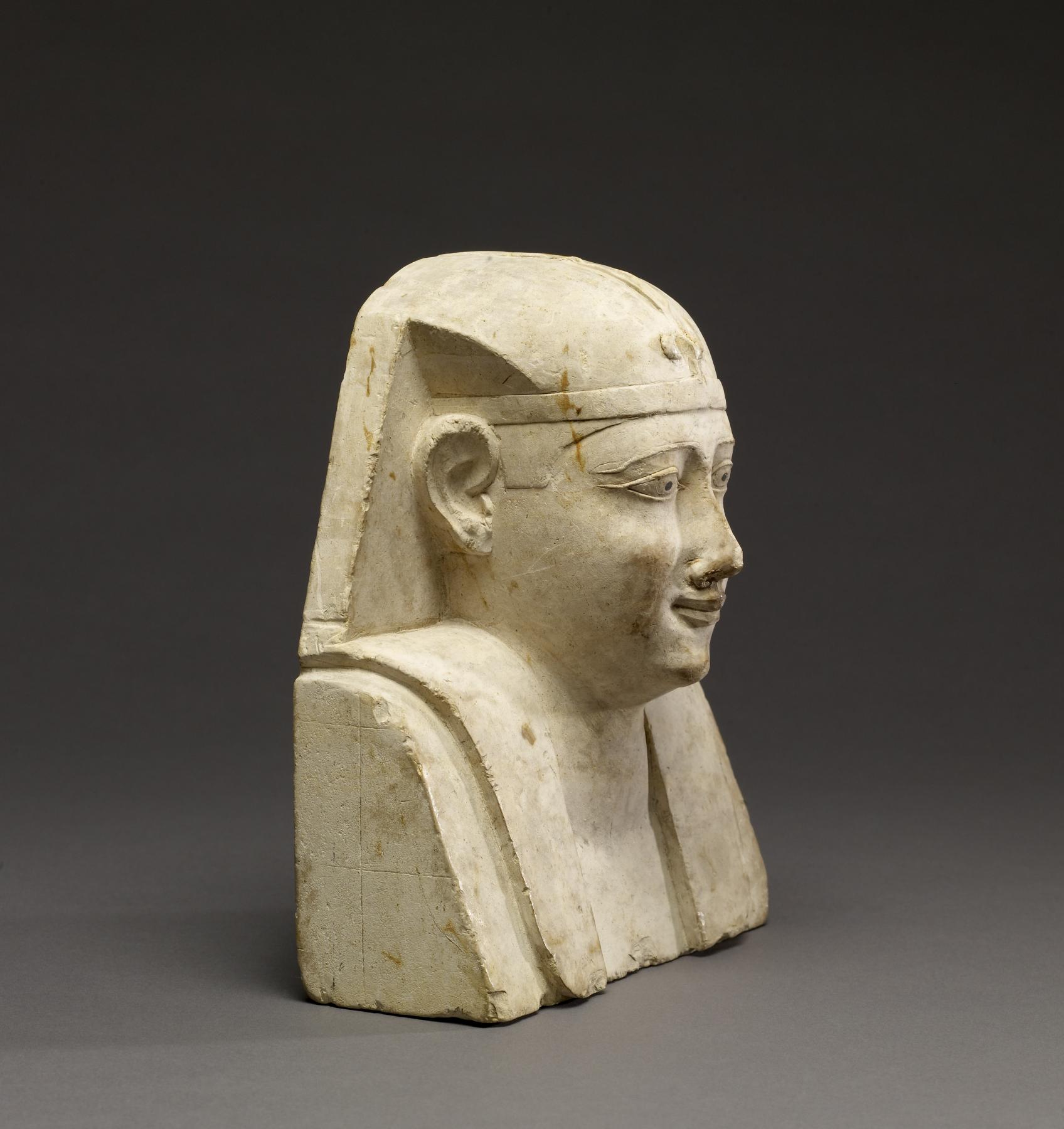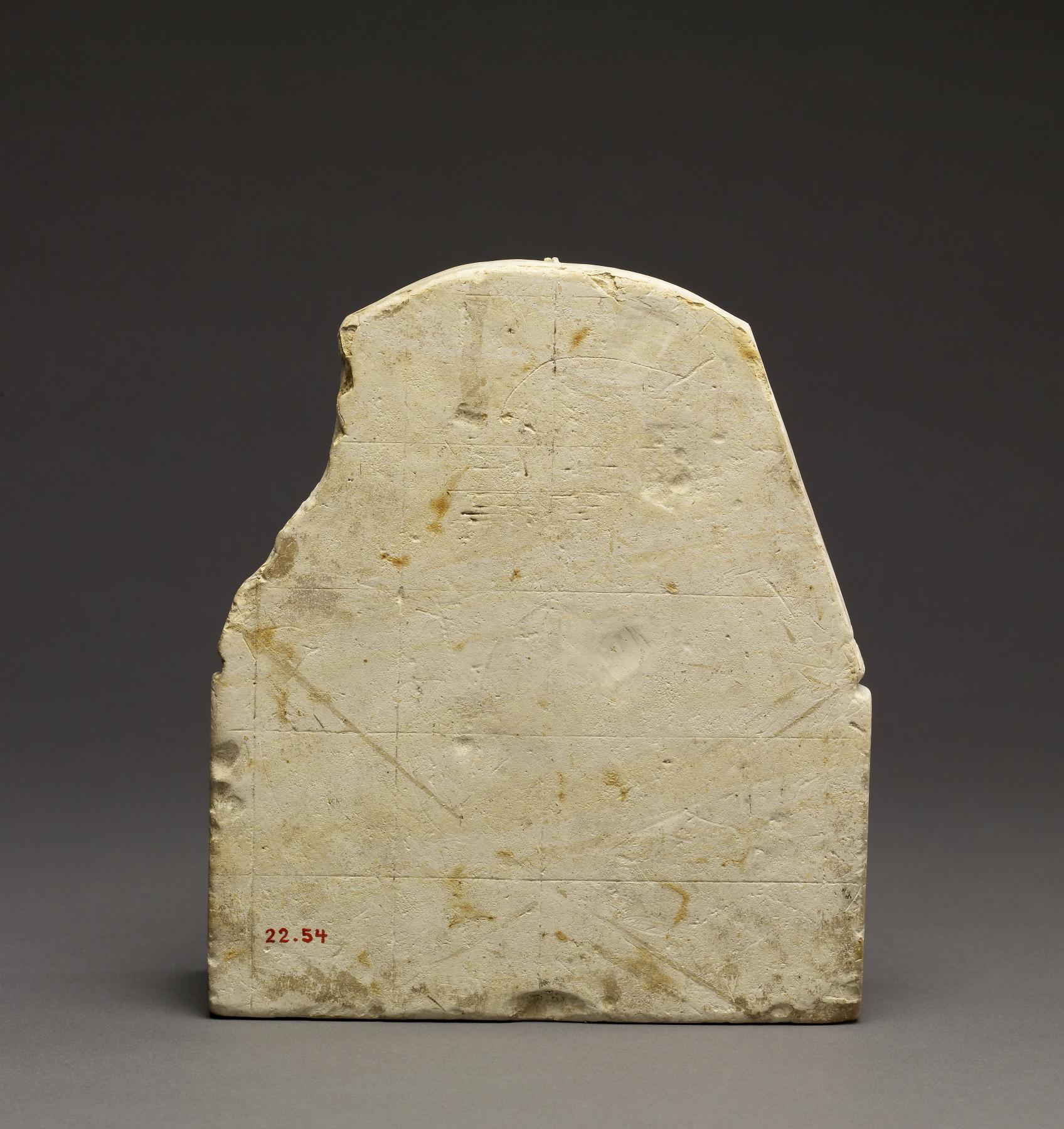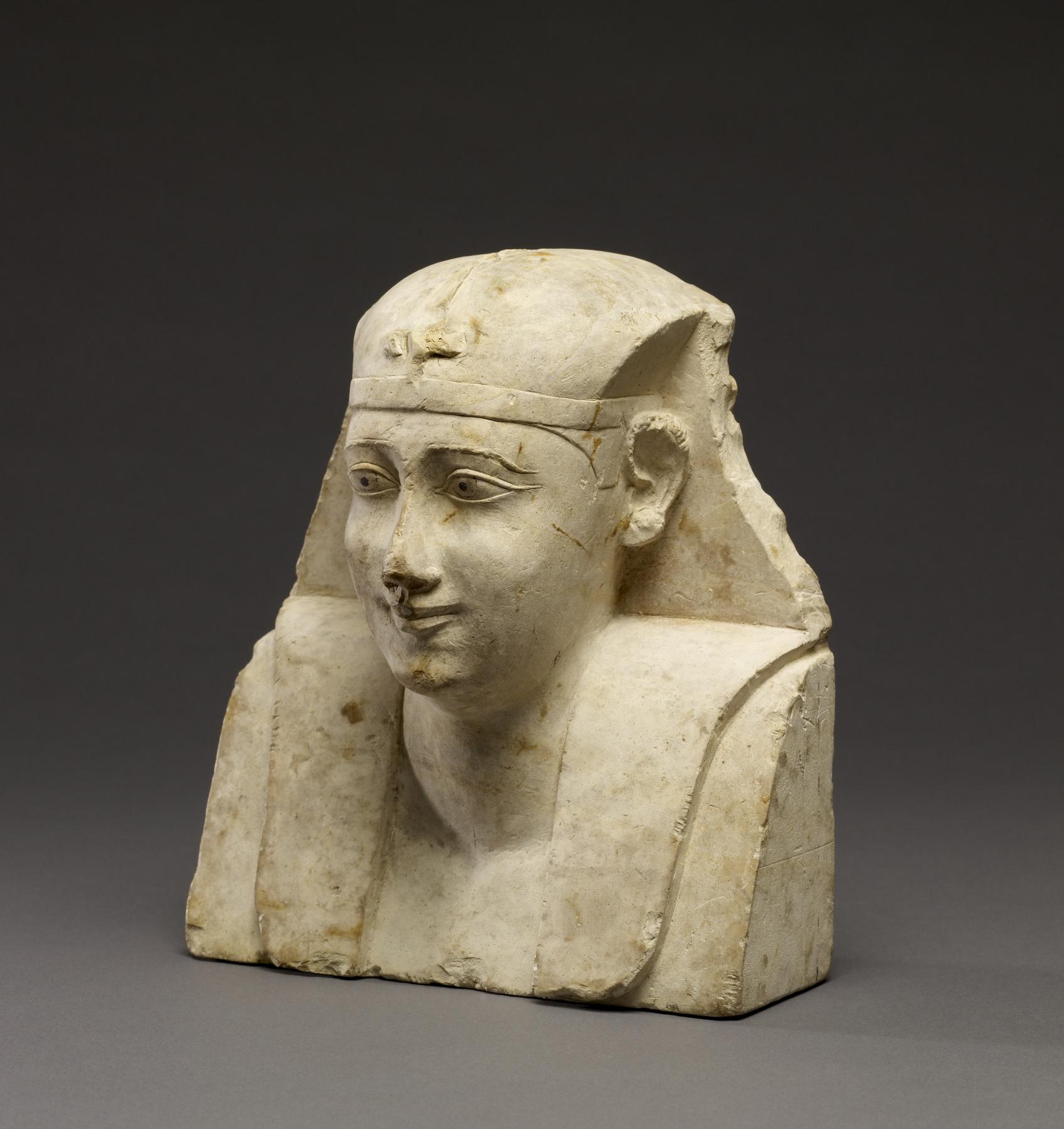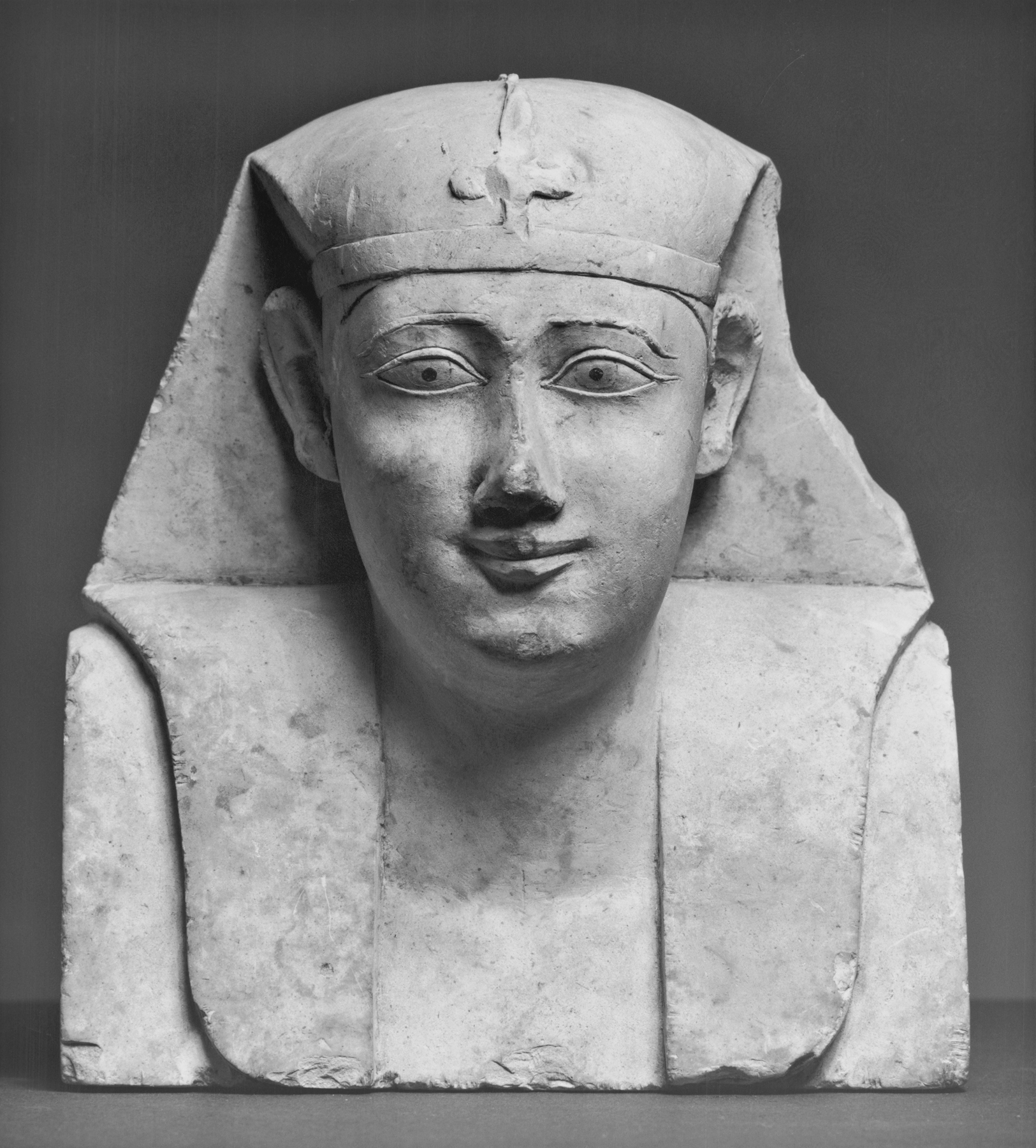Sculptor Model for a Royal Bust
(Ancient Egypt and Nubia )
A limestone model bust of a royal male wearing the "nemes" headdress with a "uraeus." The "uraeus" serpent has been broken away. As was typical for the period, the "uraeus" had two coils, one to each side and the tail extended back over the top of the rounded "nemes." Beneath the edge of the band of the "nemes" the natural hairline of the figure may be seen. The eyes are naturally outlined and the brow delicately follows the contour of the eye. The pupils and irises of the eyes are picked out in black paint. The surface of the piece has been scratched and chipped in several places. The face is fleshy and rather flat in profile. The lips are pursed and smiling. The back, sides and base are flat planes and there are grid squares etched into the back and sides. Where the lappets touch the shoulder they are creased in an unnaturally sharp way. The lappets are flat with a curved outer edge and strictly vertical inner edge.
Provenance
Provenance (from the French provenir, 'to come from/forth') is the chronology of the ownership, custody, or location of a historical object. Learn more about provenance at the Walters.
Henry Walters, Baltimore, 1920, by purchase; Walters Art Museum, 1931, by bequest.
Conservation
| Date | Description | Narrative |
|---|---|---|
| 8/24/1972 | Treatment | cleaned |
| 8/6/1998 | Examination | survey |
| 1/22/2001 | Treatment | other |
Measurements
7 3/8 x 6 5/16 x 3 3/4 in. (18.8 x 16.1 x 9.5 cm)
Credit Line
Acquired by Henry Walters, 1920
Location in Museum
Accession Number
In libraries, galleries, museums, and archives, an accession number is a unique identifier assigned to each object in the collection.
In libraries, galleries, museums, and archives, an accession number is a unique identifier assigned to each object in the collection.
22.54














